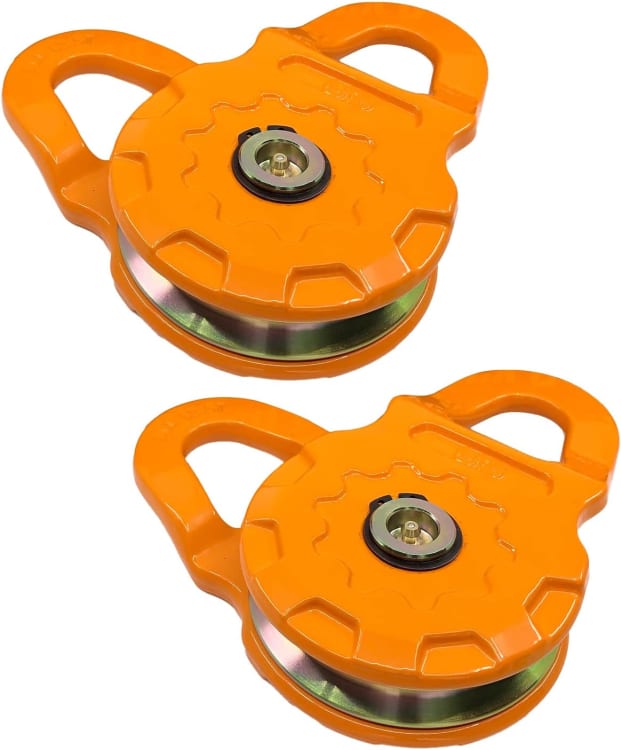If you’ve ever been stuck in the mud or had to haul something heavy, you know winching can be a real lifesaver. But let’s be real—sometimes it feels like your winch is working harder than it should. That’s where load reduction comes in, and using two snatch blocks can make all the difference. In this article, we’ll break it down nice and easy, so you can get the job done without breaking your gear—or your back.
What’s Winching All About?
Winching is just pulling something heavy with a motorized cable or rope, usually on a truck or ATV. It’s clutch for off-roading, towing, or even yard work if you’re moving big logs. But here’s the kicker: if the load’s too heavy, your winch might stall out or overheat. That’s why reducing the load on it is so important.
How Do Snatch Blocks Help?
Similar to a pulley, a snatch block has an opening side that allows you to attach it onto your winch line without having to thread the entire thing through. It’s a game-changer because it lets you redirect the pull or lighten the load. When you use one, it basically cuts the effort your winch needs in half by doubling the line. Add a second snatch block, and you’re taking things to the next level.
Load Reduction with Two Snatch Blocks
Here’s the deal: when you rig up two snatch blocks, you’re spreading the load even more. Picture this—you’ve got your winch line going from your truck, through one snatch block anchored to a tree, then through another snatch block hooked to the load, and back to your rig. This setup can cut the load on your winch down to a third of what it’d be without ‘em. Less strain means your winch lasts longer, and you’re not stuck sweating bullets while it struggles.

Image credit: Amazon
For example, say you’re pulling a 9,000-pound truck out of a ditch. Without snatch blocks, your winch is toast if it’s only rated for 5,000 pounds. But with two snatch blocks, that 9,000-pound pull gets knocked down to around 3,000 pounds of effort on the winch. Boom—problem solved.
Why Two Instead of One?
One snatch block is dope, don’t get me wrong—it halves the load and gives you better angles. But two? That’s when the magic happens. You get more pulling power and flexibility, especially if you’re dealing with weird angles or super heavy stuff. Plus, it’s safer ‘cause you’re not pushing your gear to the limit.
Last summer, I was out four-wheeling with some buddies, and my Jeep got stuck in this nasty mud pit. I’m talking axle-deep, no-way-out kinda stuck. My winch is decent, but it was groaning like it was about to give up. I’d brought two snatch blocks just in case, so I hooked one to a tree and another to my bumper, ran the line through, and holy crap—it pulled me out smooth as butter. Took half the time I expected, and my winch didn’t even break a sweat. Learned my lesson that day: two snatch blocks are the real MVPs.
Tips for Using Two Snatch Blocks
- Anchor Smart: Make sure your anchor points (like trees or another vehicle) are solid. A wimpy tree ain’t gonna cut it.
- Check Your Gear: Snatch blocks gotta be rated for the weight you’re pulling. Don’t skimp here.
- Line Up Right: Keep the angles clean so the line doesn’t rub or snag. A little planning goes a long way.
- Watch the Rope: Doubling up means more rope in play—keep an eye on it so it doesn’t get tangled.
Wrap-Up
Winching doesn’t have to be a hassle. With two snatch blocks, you’re cutting the load, saving your winch, and getting the job done faster. This tip will come in handy whether you're off-roading or simply hauling some heavy items about the yard. Try it the next time you're stuck; you'll be surprised at how simple it is.





